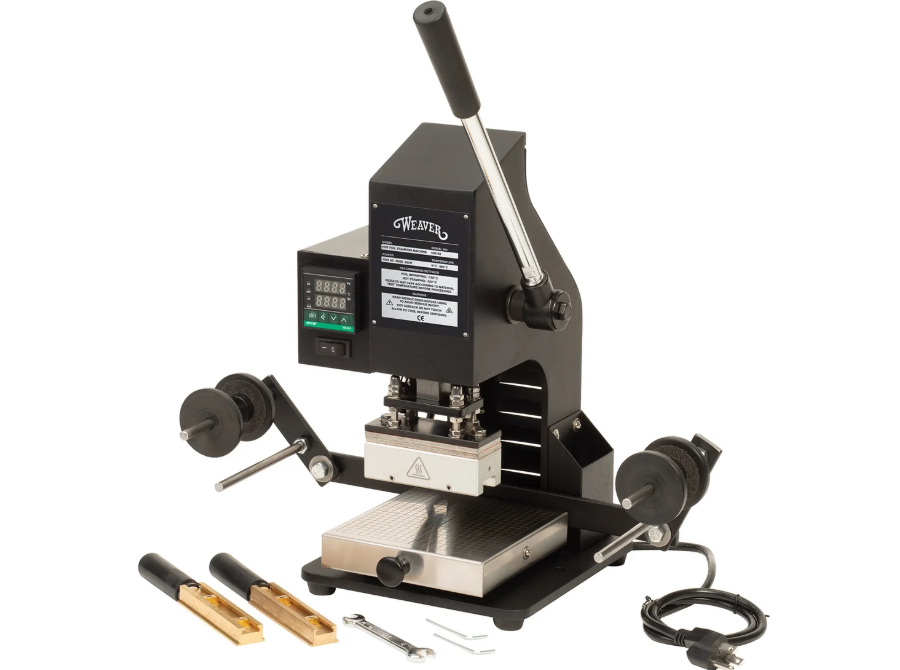Stamping machines play a crucial role in modern manufacturing, offering high-speed, high-precision metal forming for a variety of industries. These machines are widely used in the automotive, aerospace, electronics, and appliance industries to create metal parts through processes like blanking, punching, bending, and embossing. As the demand for efficiency and precision grows, manufacturers continue to innovate, enhancing stamping technology with automation, servo-driven systems, and AI-powered monitoring.
How Stamping Machines Work
A stamping machine applies force to a metal sheet using a die to shape it into the desired form. The process involves several stages:
- Feeding: Metal sheets or coils are fed into the stamping press.
- Positioning: The material is aligned with the die to ensure accurate stamping.
- Pressing: The press applies force to cut, bend, or shape the metal.
- Ejection: The finished part is removed from the press for further processing.
Modern stamping machines use hydraulic, mechanical, or servo-driven presses, each suited for different applications depending on precision, speed, and force requirements.
Types of Stamping Machines
1. Mechanical Stamping Machines
Mechanical presses use a flywheel and clutch mechanism to deliver high-speed, repeatable force. They are ideal for large-volume production, with capacities ranging from 20 to over 1,000 tons. These machines are commonly used in the automotive sector for producing body panels and structural components.
2. Hydraulic Stamping Machines
Hydraulic presses generate force through fluid pressure, allowing for more precise and adjustable control. They are ideal for deep drawing and complex shapes, making them popular in aerospace and heavy machinery applications.
3. Servo Stamping Machines
Servo presses use advanced motor-driven technology, enabling variable speed and force application. They offer superior accuracy, reduced noise, and energy efficiency compared to traditional mechanical presses. Servo stamping is increasingly adopted in high-end electronics and precision automotive components.
Applications of Stamping Machines
Automotive Industry
Stamping machines are integral to vehicle manufacturing, producing chassis components, transmission parts, and body panels. Companies like Ford, Toyota, and Volkswagen rely on high-tonnage presses to maintain production efficiency.
Electronics Manufacturing
Consumer electronics require precision metal parts for connectors, casings, and circuit board components. Stamping machines equipped with fine blanking capabilities are used to manufacture small, intricate parts with high accuracy.
Aerospace Industry
Aircraft components require lightweight yet strong materials, often involving titanium and aluminum alloys. Stamping technology is essential for producing turbine blades, brackets, and fuselage reinforcements with tight tolerances.
Home Appliances
Washing machines, refrigerators, and microwaves all contain stamped metal parts. High-speed progressive stamping machines ensure consistent production of durable, cost-effective components.
Market Trends and Innovations
1. Automation and Industry 4.0
Automated feeding systems, robotic handling, and AI-driven quality control are transforming stamping operations. Smart factories use IoT-enabled stamping machines to track performance and predict maintenance needs.
2. High-Speed Precision Stamping
Demand for miniaturized and complex components is driving innovations in high-speed stamping technology. Companies are investing in servo-driven presses capable of micrometer-level accuracy.
3. Eco-Friendly Stamping Solutions
With a growing focus on sustainability, manufacturers are exploring energy-efficient servo presses and recycling strategies for scrap metal. Advanced lubricants and coatings are also being developed to reduce material waste and tool wear.
Choosing the Right Stamping Machine
When selecting a stamping machine, key factors to consider include:
- Material Type: Different metals require different force capacities and die designs.
- Production Volume: High-speed mechanical presses are suitable for mass production, while hydraulic presses are better for specialized applications.
- Precision Requirements: Servo presses offer the highest level of accuracy for complex components.
- Budget and ROI: Initial investment costs versus long-term operational savings should be evaluated.
Conclusion
Stamping machines are a cornerstone of modern manufacturing, driving efficiency and precision across multiple industries. With advancements in automation, AI, and eco-friendly technology, the future of stamping continues to evolve, offering manufacturers better performance and sustainability. Companies investing in next-generation stamping solutions will gain a competitive edge in an increasingly demanding market.









